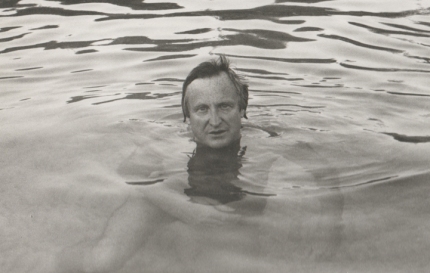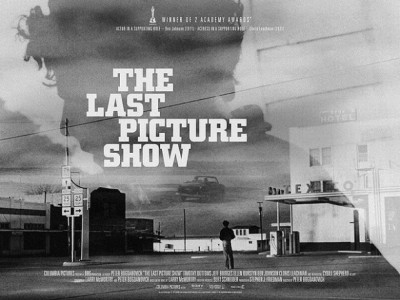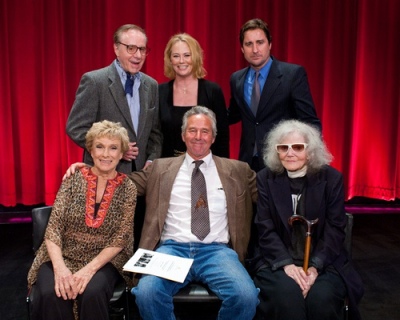I will never forget the first time I entered the unique film world of John Boorman. I was around 17 or 18. A matinee screening of Zardoz at the National Film Theatre on London’s South Bank. I wandered out of a misty Autumn day into the mist-shrouded strangeness of the opening of that film and was spellbound. A giant stone head floats across a rocky wasteland —
— and Sean Connery emerges reborn out of the ashes of his tour of 007 duty as a bare-chested, mustachioed enforcer in a post-apocalyptic society populated by actors I knew from British sitcoms.
Strange does not even begin to describe this film and yet….. Yet…..
This was film making that did not play it safe. It tackled big themes and mythological subtext was pushed to the foreground. It was artful, adventurous, and frequently fell on its face. The performances pushed the envelope. In short, it was everything that mainstream British film-making of the time mostly wasn’t: risk-taking, emotionally naked, larger-than-life, intellectually challenging, and willing to put it all on the line.
I was hooked. I sought out Boorman’s previous work in late-night screenings at the Penultimate Picture Palace on the outskirts of Oxford, my film school at university. There was Deliverance; the masterpiece Point Blank (the ONLY truly great color film noir that is also the quintessential, ground-zero genre exploration of existential angst); the extraordinary Hell in the Pacific, in which Lee Marvin and Toshiro Mifune play two combat soldiers from World War II still fighting the war on a remote Pacific atoll long after VJ Day.
In 1981, Excalibur was released. This was Boorman’s vast, sprawling telling of the Arthurian legends, and I was spellbound. It was (and still is) the only time that a film has utterly committed to telling myth as if it was real history, with magic and the supernatural acting as strongly on the protagonists as their own turbulent emotions. Yes, the film is occasionally wayward, and elicits giggles in some of its more on-the-nose moments, largely because of memories of Monty Python and the Holy Grail which had been released some years earlier. But then again there are images, scenes, juxtapositions which are as breathtaking as any in cinema.
And then there’s Merlin: Nicol Williamson’s entirely off-the-wall, off-kilter, playful, eccentric characterization that was savaged (and I mean savaged) by the critics of the time, but which I believed then, and certainly believe even more now, is one of the most iconoclastic and brave performances ever put on celluloid.
And a young, entirely sexy Helen Mirren as his evil nemesis.
Plus one of the most priapic, Jungian/Freudian (take your pick) sex scenes in movie history (you know the one….)
The best book written about Stanley Kubrick is by the leading critic of the French journal Positif, Michael Ciment. Which other director did he choose to write about in similarly expansive fashion? John Boorman. There’s a good reason for this. Like Kubrick, Boorman has consistently challenged our expectations of what a mainstream genre film can and should be. Both books have sat prominently on my bookshelf since they were published, and I dip into them often.
These thoughts were much in my mind last night as I strolled into the Aero Theatre in Santa Monica to see the Los Angeles premiere of John Boorman’s self-declared final film, Queen and Country, presented by the American Cinematheque.
It’s a sequel to his masterly autobiographical film about growing up during the London blitz, Hope and Glory. In attendance was Boorman himself, a spritely octogenarian, his eyes sparkling with all the wit and impishness that drives the originality and risk-taking at the heart of his work.
The film itself was as fresh and surprising as any of its predecessors. It focuses on the young hero’s experiences as a conscript doing his British national army service during the Korean war. In characteristic Boorman fashion, the film serves partly as an anthropological investigation of a social group adrift from its moorings – in this case an army that is not actually fighting a war. The absurdities of the hierarchies and rituals of the institution are thrown into relief as Britain and its inhabitants reach for meaning in a post-War world.
Within this world we follow our hero through the travails of first love, the complexities of adult relationships, and discovering his passion for movies.
The film ends with the hero and his girl locked in a playful embrace, sinking beneath the waters of the Thames, as his abandoned camera film the scene. It’s a lovely, perfectly apposite image on which Boorman ends his film maker’s journey, recalling the many rivers that run throughout his work, conduits of destruction and rebirth – tactile, universal, mythological.
After the screening, the director took the stage to a standing ovation. He offered insights and advice that any film maker would do well to heed, including the recommendation to seriously consider an alternative career: he reflected that he had spent more time on films that never got made than on ones that did.
And he told some great stories about working with two of the cinema’s greatest acting legends: Lee Marvin and Toshiro Mifune.
Boorman’s relationship with Mifune could best be described by the title of the film they were shooting: Hell in the Pacific. Boorman recounted how, at one particularly fraught juncture, he let fly with his criticisms, then insisted that the interpreter through whom they communicated repeat his words verbatim to the star. Mifune listened, then proceeded to punch and knock out the interpreter. Without missing a beat he turned to the director, smiled and nodded. At one point in the shoot, Boorman fell ill and production halted. Worried producers offered Mifune the opportunity to replace Boorman, which they thought the actor would jump at. Mifune instead insisted they stick with Boorman. It was, he said, a matter of honor.
Not a familiar concept to your average Hollywood suit, commented Boorman. The audience at the Aero ate this up.
Boorman recounted how he and Lee Marvin became close friends, and he told several wonderful stories about their friendship.
After Marvin and Boorman had completely reworked the original script for Pont Blank and it came time to start filming, Marvin literally threw the script out of the window. At a meeting with the studio brass Marvin said that he was ceding all his story and casting control to the novice director. Boorman never forgot this support. He noted that the film, about a man who is shot and left for dead, then goes in search of his killers, became a means for Marvin to confront his own demons from combat duty during the war.
On a lighter note, Boorman recalled a memorable evening out with Marvin who, by closing time, was very drunk indeed. Boorman struggled to prevent Marvin from taking the wheel of his car to drive home, finally wresting the keys from him. Marvin proceeded to jump onto the roof of the car and refused to come down. Boorman decided to drive him home anyway.
There they were, weaving their way up the Pacific Coast Highway to Marvin’s home in Malibu, Boorman at the wheel, the star clinging to the roof. Suddenly a siren sounded, and the cops pulled him over. Up walks the patrolman.
“Sir, you do realize that Lee Marvin is on the roof of your car…..?”
How many directors can tell a story like that?

































































